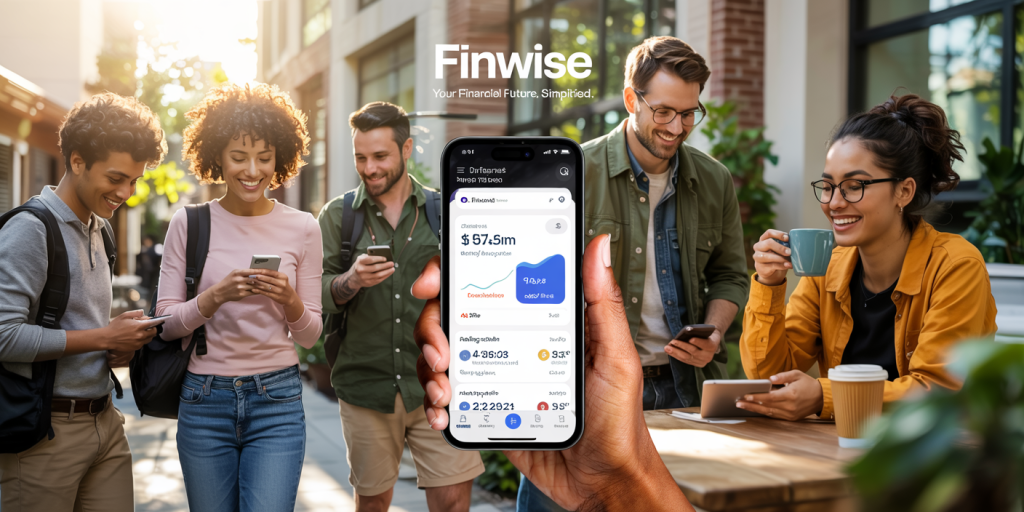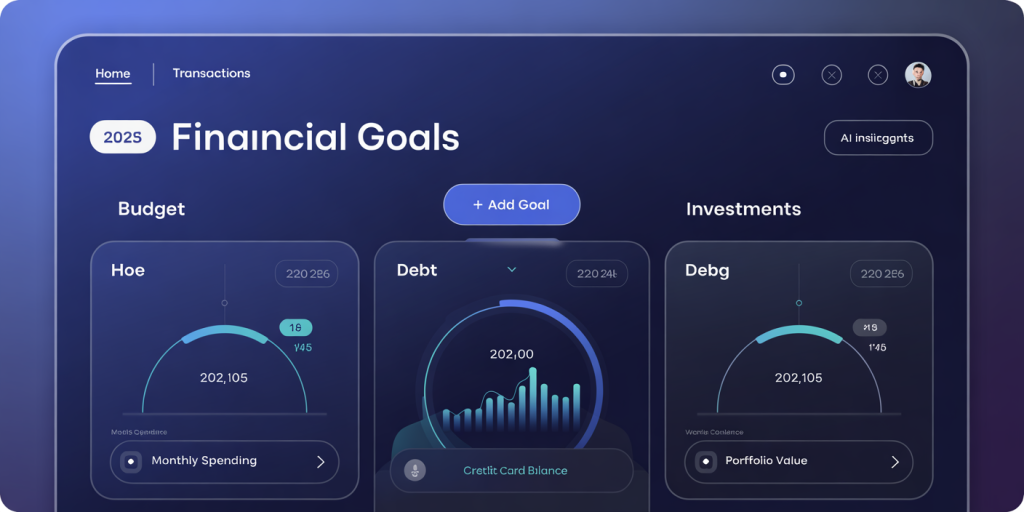Best Apps to Track Financial Goals in 2025
Managing personal finance has become a vital skill in today’s fast-paced world, and setting financial goals is key to ensuring long-term stability and growth. With advancements in technology and mobile applications, tracking financial goals has never been easier or more efficient. In 2025, several apps stand out for their ability to help users plan, monitor, and achieve their financial objectives. This article explores the most effective tools available, supported with real-life examples and practical insights, to help you select the best app tailored to your needs.
The Growing Importance of Financial Goal Tracking
Over the past decade, the landscape of personal finance management has evolved drastically. A 2024 survey by the National Endowment for Financial Education found that 62% of Americans set financial goals but only 38% regularly track their progress. This gap highlights the critical role applications play in bridging intention and action by providing real-time updates, personalized advice, and automated routines.
Tracking financial goals is no longer a tedious task confined to spreadsheets and manual entries. For instance, a recent Deloitte report indicates that over 75% of millennial and Gen Z users rely on financial apps to monitor expenditures and savings goals. The convenience of automated tracking, combined with actionable insights, enables users to make informed decisions quickly. Whether it’s saving for a house, eliminating debt, or investing for retirement, a good app can simplify complex objectives into manageable steps.

Top Apps Overview: Features and Functionality
When selecting an app to track financial goals, it’s essential to consider functionality, ease of use, security, and customization. Here’s a comparative table showcasing some of the top contenders in 2025:
| App Name | Key Features | Best For | Platforms | Pricing |
|---|---|---|---|---|
| YNAB (You Need a Budget) | Budgeting, Goal tracking, Debt payoff, Live reports | Detailed budget planners | iOS, Android, Web | Subscription ($14.99/month or $99/year) |
| Mint | Expense tracking, Bill reminders, Goal setting | Beginners, holistic finance | iOS, Android, Web | Free, with ads |
| Personal Capital | Investment tracking, Retirement planner | Investment-savvy users | iOS, Android, Web | Free, premium advisory available |
| PocketGuard | Budgeting, Spending limits, Goal setting | Simple budget control | iOS, Android | Free, $4.99/month Premium |
| Goodbudget | Envelope budgeting, Debt tracking, Goals | Envelope system users | iOS, Android, Web | Free, $7/month Premium |
Each of these apps offers different approaches to financial goal tracking, ranging from detailed budgeting techniques to investment-focused platforms. The following sections dive deeper into each app’s unique advantages and practical applications.

YNAB: For the Budget-Conscious Goal Setter
“You Need a Budget” (YNAB) has gained a reputation for empowering users to take control of their money with a zero-based budgeting method. Its emphasis on assigning every dollar a job allows users to focus their financial goals systematically and intentionally. For example, a consumer aiming to save for a family vacation can allocate funds per paycheck to a dedicated vacation category, witnessing progress through live reports.
In real-world cases, YNAB users often report significant improvement in debt reduction. According to YNAB’s own data, 75% of users who consistently use the app pay off credit card debt within 12 months. Its goal dashboard allows users to set and monitor several financial objectives simultaneously, including emergency funds, debt payoff, and savings goals. The app’s educational component, with workshops and tutorials, fosters financial literacy alongside application use.
Mint: The All-in-One Financial Overview
Mint, a long-standing favorite in personal finance apps, offers an excellent starting point for beginners due to its intuitive interface and broad features. It connects with thousands of banks, credit cards, and bills, automatically syncing transactions. This seamless aggregation allows users to set financial goals such as reducing monthly dining out expenses or boosting savings by a certain percentage.
A practical example comes from a recent case study by Intuit: a user tracked and lowered discretionary spending by 15% over six months using Mint’s categorized reports, resulting in an additional $3,000 savings for a home down payment. The app also includes bill reminders, alerts for unusual spending, and credit score tracking—tools that encourage disciplined financial habits.
Despite its free pricing, Mint supports advertisements and financial product recommendations, which some users might find intrusive. However, for casual financial goal setters seeking a full snapshot of their finances, Mint remains an unbeatable option.
Personal Capital: Integrating Investment Goals
For users focusing on investment and retirement goals, Personal Capital stands out. Unlike pure budgeting apps, Personal Capital offers advanced portfolio tracking, asset allocation analysis, and retirement planning tools. It integrates financial goal tracking with your investment strategy, providing a long-term vision on wealth accumulation.
Consider a scenario in which a user nearing retirement age wants to estimate whether their current savings pace will meet their retirement income needs. Personal Capital’s Retirement Planner models this by inputting current assets, expected expenses, and projected Social Security benefits. The result is a comprehensive picture that helps users adjust their contribution rates or investment choices accordingly.
According to a 2023 user satisfaction survey, Personal Capital’s tools significantly enhance users’ confidence in retirement readiness, with 68% stating they felt more prepared after utilizing the app. Its free price tag is a major plus, although users seeking personalized financial advice can opt for a premium advisory service.
PocketGuard and Goodbudget: Simple Yet Effective Approaches
PocketGuard targets users who want straightforward budgeting and spending control without overwhelming features. Its approach revolves around telling users how much disposable income remains after bills and goals. For example, a single professional managing monthly subscriptions and living expenses can quickly adjust spending decisions based on PocketGuard’s “In My Pocket” feature.
Goodbudget, on the other hand, employs the envelope budgeting method—a tactile, categorical budgeting style translated into digital form. This app is ideal for couples or families wanting to share budget envelopes, making it easier to coordinate financial goals together. For example, users can create envelopes for groceries, entertainment, and savings towards a new car, visually controlling spending limits.
While PocketGuard focuses on automatic expense analysis, Goodbudget requires manual transaction input but rewards discipline and intentional spending through its envelope system.
Comparative Effectiveness: Matching Apps to User Needs
Choosing the best financial goal tracking app depends largely on individual needs, habits, and financial complexity. The table below compares key aspects and ideal user profiles for each solution:
| Criteria | YNAB | Mint | Personal Capital | PocketGuard | Goodbudget |
|---|---|---|---|---|---|
| Ease of Use | Moderate | High | Moderate | High | Moderate |
| Best for Budgeting | Yes | Yes | Limited | Yes | Yes |
| Investment Tracking | No | Limited | Yes | No | No |
| Goal Monitoring | Comprehensive | Good | Excellent | Basic | Basic |
| Collaboration | Limited | No | No | No | Yes |
| Cost | Paid Subscription | Free w/ads | Free (+ premium) | Free + subscription option | Free + subscription option |
Understanding your financial goals, whether focused on budgeting, investing, or collaborative planning, will guide your app choice. For users combining budgeting with debt payoff, YNAB excels, while investors lean towards Personal Capital. Casual users or beginners will find Mint or PocketGuard more approachable, and households aiming to budget jointly should consider Goodbudget.
Looking Ahead: Trends in Financial Tracking Apps in 2025 and Beyond
The financial app industry continues to innovate rapidly. Emerging trends include incorporation of artificial intelligence (AI) for predictive analytics, personalized coaching, and voice-assisted budgeting. In 2025, users can expect apps to transition from purely reactive tools to proactive financial advisors, anticipating spending patterns and providing tailored advice.

For example, AI-enabled apps can recommend optimal times to invest surplus funds or alert users when a financial goal is at risk due to changing income trends. Integration with open banking APIs will enhance data synchronization, making goal tracking more accurate and automatic. Furthermore, privacy and security improvements will remain paramount, as financial apps handle increasing volumes of sensitive data.
Financial gamification, encouraging users through rewards and challenges, may also become more standard, enhancing engagement. Research by Allied Market Research forecasts the personal finance app market to grow at a CAGR of 6.9% between 2023 and 2030, reflecting heightened demand for smarter financial management solutions.
In conclusion, the best app to track financial goals in 2025 depends heavily on the user’s financial ambitions, preferred interface, and level of detail desired. By leveraging current technology and understanding individual needs, consumers can harness these apps to turn financial aspirations into achievable realities. Keeping an eye on future functionalities and industry trends will also ensure users remain one step ahead in their financial journeys.
